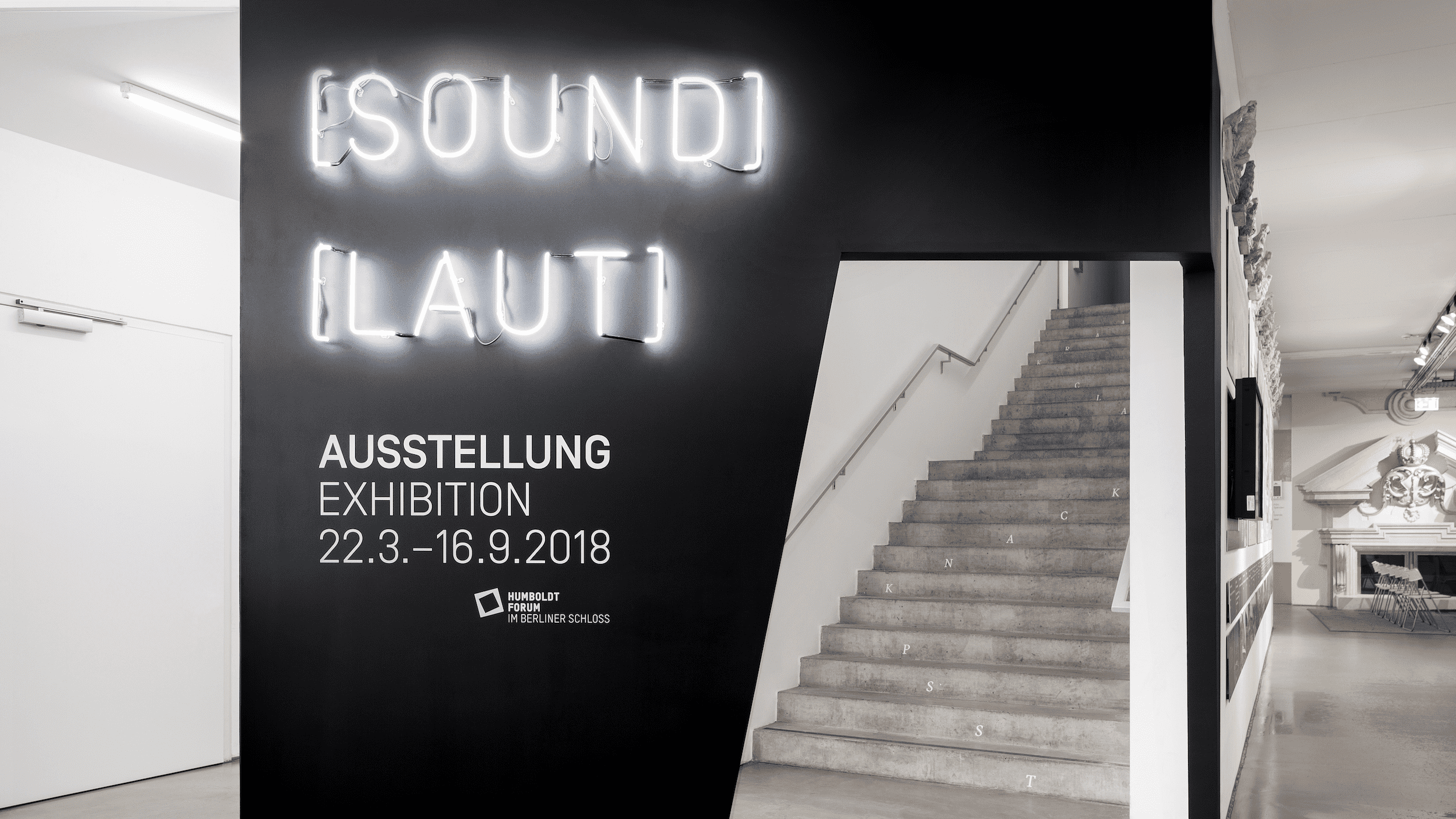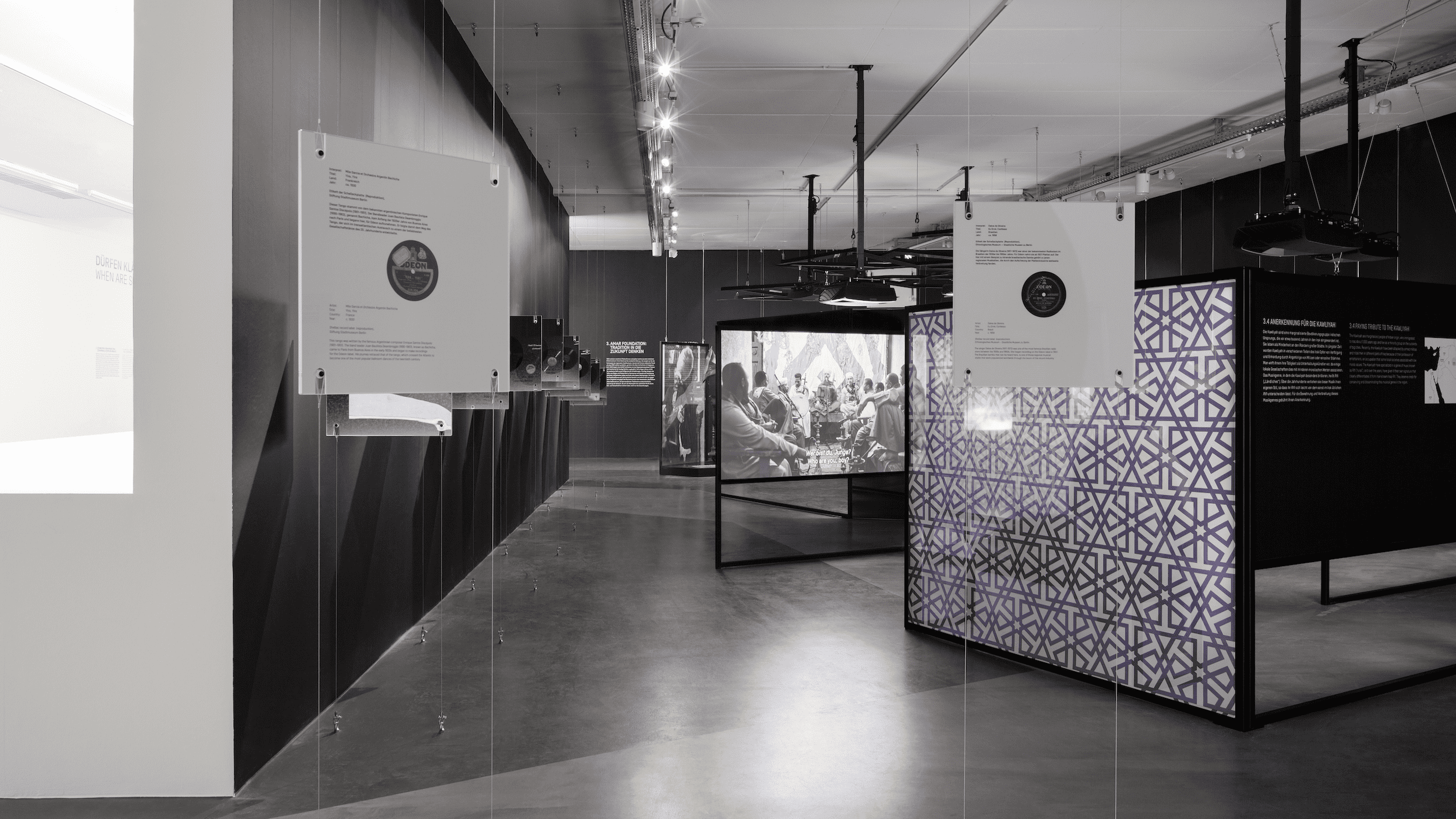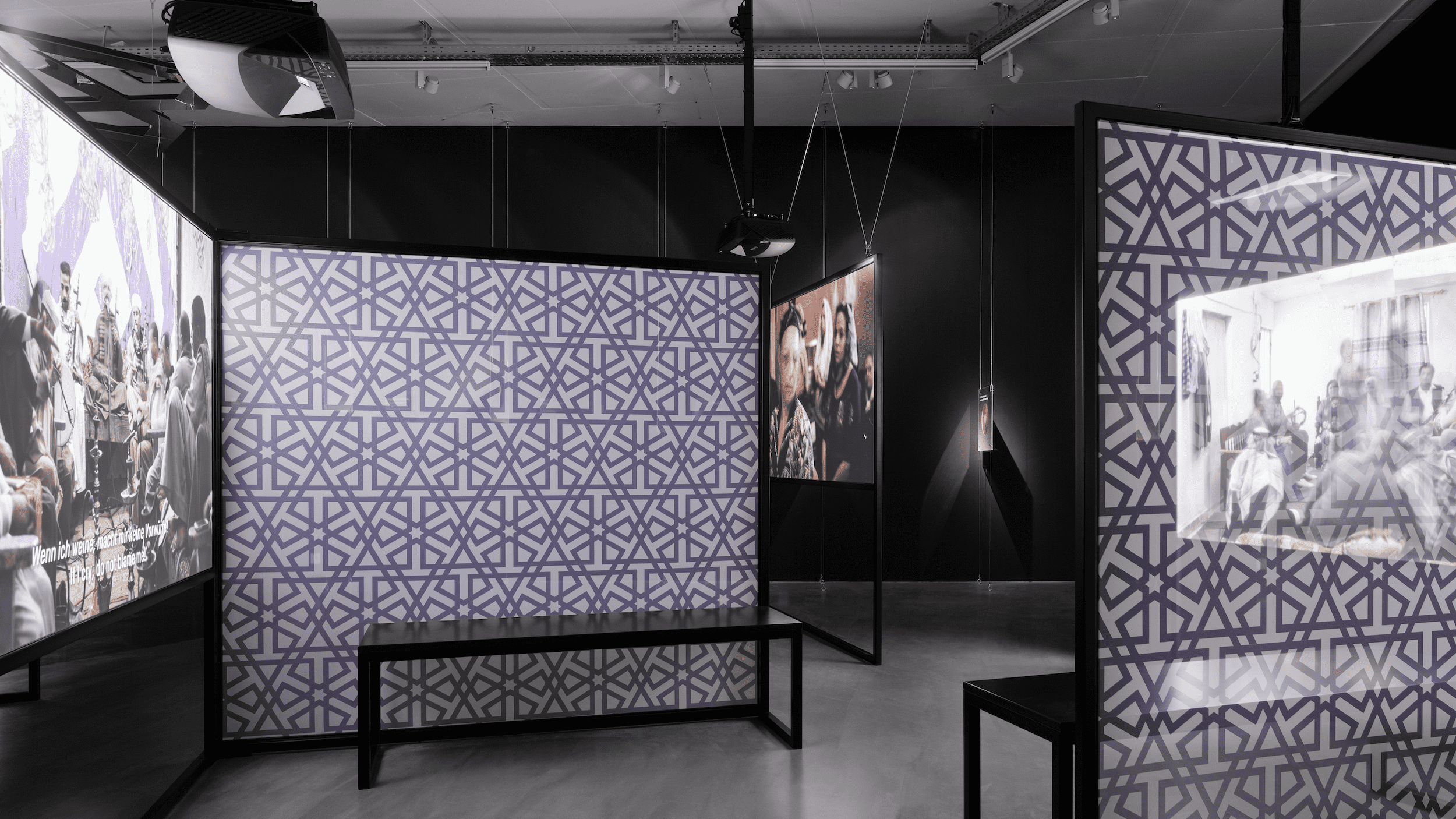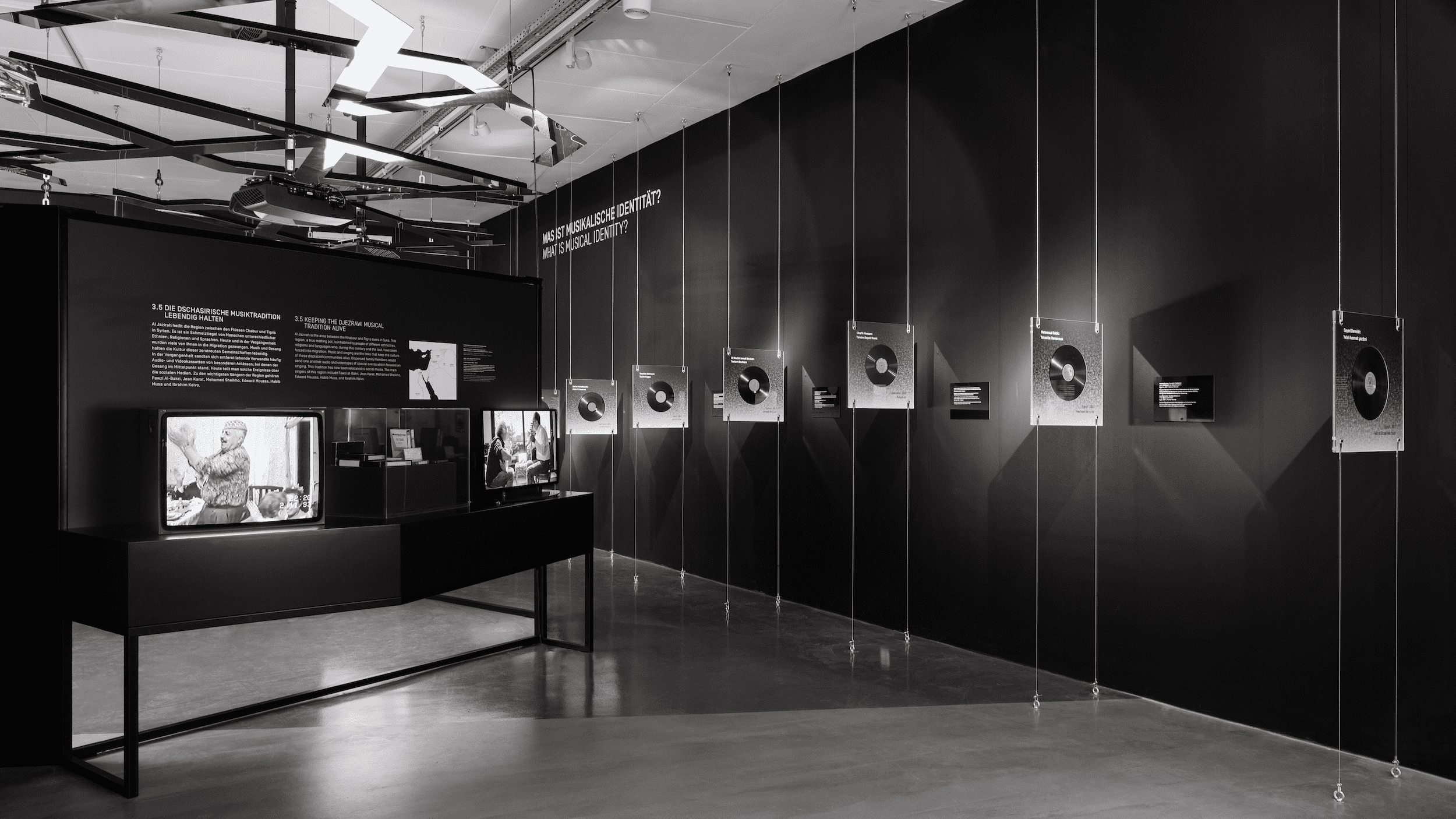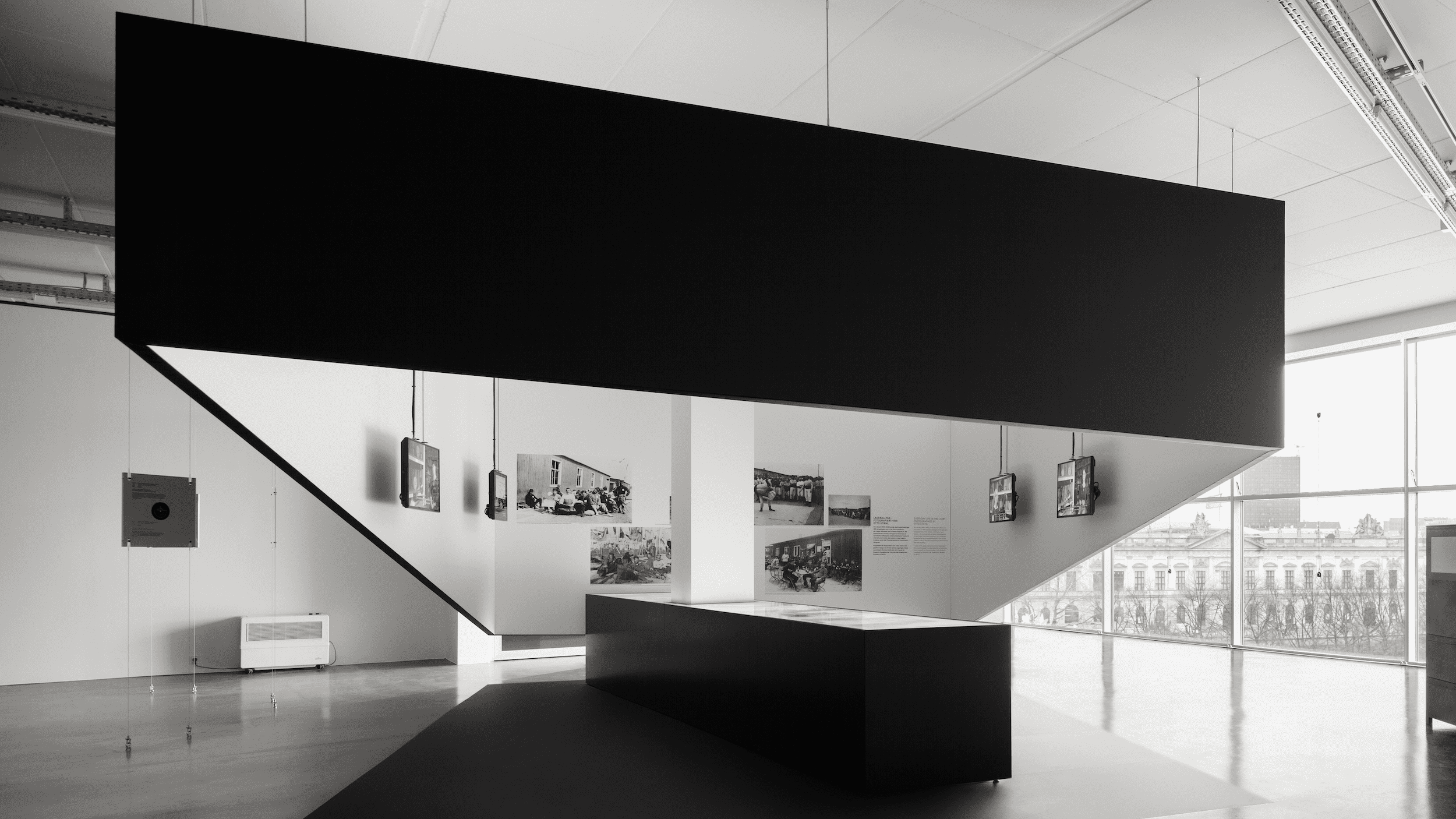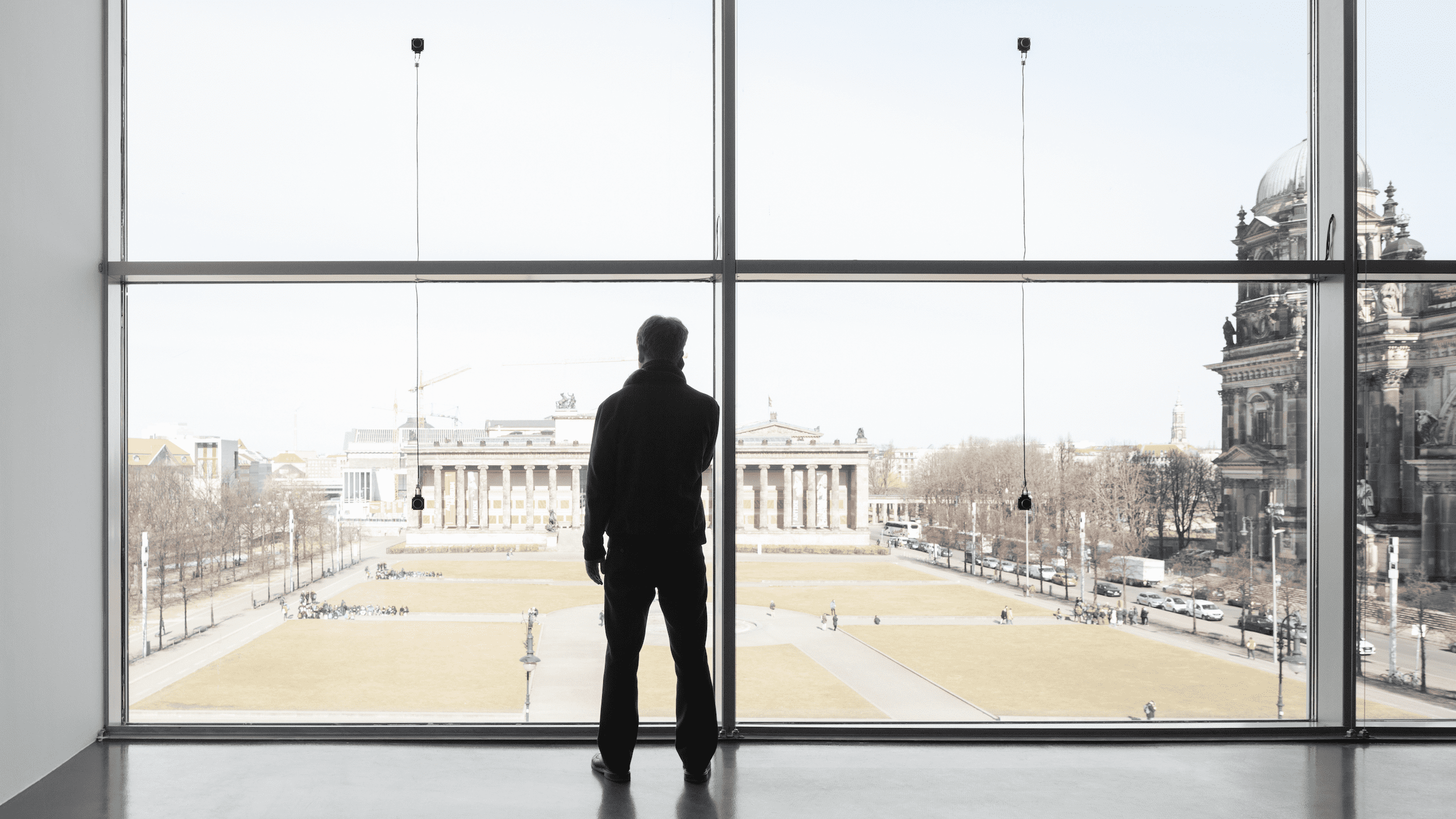The music-historical exhibition “[sound] Listening to the World” at the Humboldt Box Berlin analyses how, across various cultures and epochs, music and other sounds are recorded and shared, how melodies and rhythms are passed on through space and time, and how they are being transformed in the process.
The interactive sound system usomo is the ideal gadget on the way through the exhibition at the Humboldt Box, the acoustic guidance of which is being complemented by filmic installations, info stations, musical instruments, and other objects. Equipped with headphones, on top of which the usomo tracking module is affixed, and a smartphone around the neck, the visitors make their way through the exhibition and do not have to do anything more than to hear, see, and enjoy. The path chosen is completely up to each visitor because usomo reacts in real time to the movement and position of the individual in the space. There is no prescribed route, everyone walks their own intuitive paths. Depending on which object one is standing in front of or into which area of the exhibition one is moving in to, the music and voices that are stored on the smartphone automatically play back, turn louder or lower, change.
The sounds are not emitted from static sources that are anchored in the space, as it is the case with traditional audio systems, even with the interactive audio systems that exist today. Upon turning and moving along, the sound follows the users individually and immerses them from all sides. It is taking a fully realistic dive into the digital sound worlds.
This immersive effect is especially impressive in a video installation playing on three screens that are positioned closely at right angles. The visitor stands in the middle of these moving images and watches the scenes unfold around. With usomo on the headphones, one is literally drawn into the scene. The sounds come exactly from where the corresponding images are. The voice of a singing person on the left side does also come from there, and the music that is being made on the other side does also seem to be emitted from the instrument shown there. Upon turning away and emerging from the scene, the sounds change accordingly, and it feels like leaving a real situation.
Passing a row of vinyls that are attached to the wall at right angles, passing vitrines with detailedly labeled, yellowed music and video tapes and hand-written transcripts, each object digitally triggers sounds that are connected to the next in fluid sequencing. Semi-transparent gaze fabrics with Arabian ornaments function as spatial dividers and suggest being in the same room with the storyteller in the film, enhancing the acoustically immersive effect. After some larger informative and entertaining stations, interactive hotspots in the floor playfully lead the visitors along an imaginary route through Arabian and European cultures and epochs, guiding them by means of a very old song from ancient times into the present.
Press
PLOT Magazin
[LAUT] DIE WELT HÖREN, BERLIN
5 March 2019
Art in Berlin
Klangarchive. „[laut] Die Welt hören“ in der Humboldt-Box
15 September 2018
Humboldt-Universität zu Berlin
Sebastian Klotz zur Ausstellung [laut] Die Welt hören
4 April 2018
Bayerischer Rundfunk
Die Welt hören: Anfänge der Tonaufzeichnung
28 March 2018
taz
Ausstellung zum Lautarchiv: Wem gehört der Klang?
24 March 2018
Credits
Website smb.museum
Client and curation Stiftung Humboldt Forum im Berliner Schloss, Berlin
Lead agency TheGreenEyl, Berlin
Spatial sound system usomo by FRAMED immersive projects, Berlin
usomo tasks usomo sound system, spatial audio production, consulting on the interactive sound concept and playback logic
Duration 22 March to 16 September 2018
Photos Schnepp Renou, Berlin

